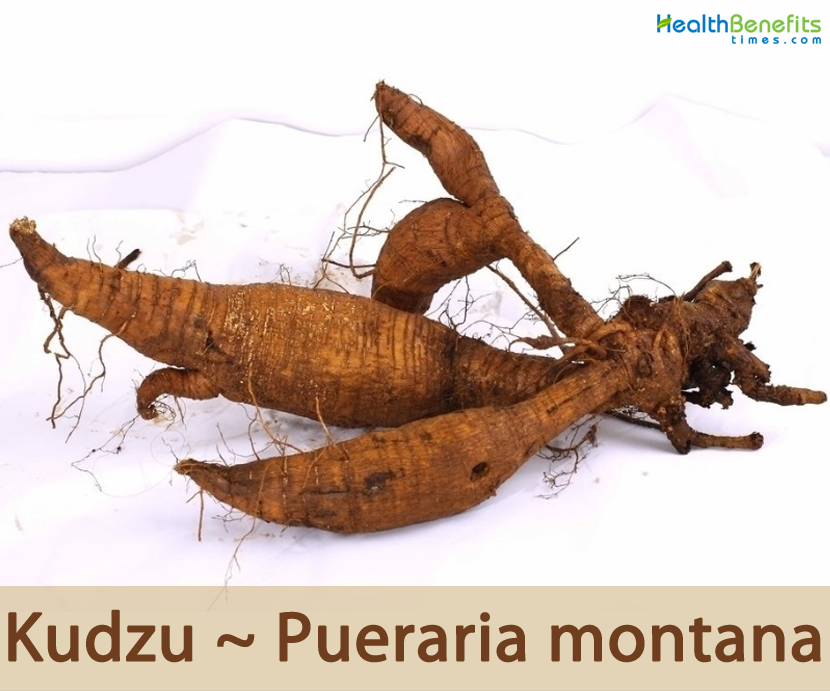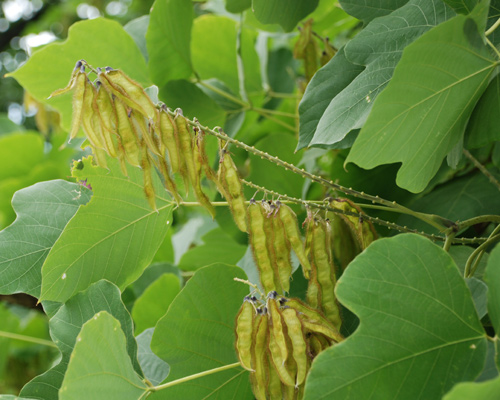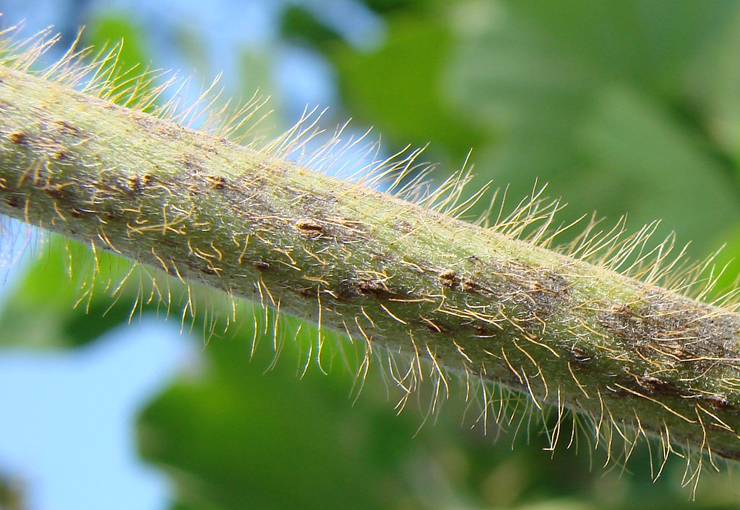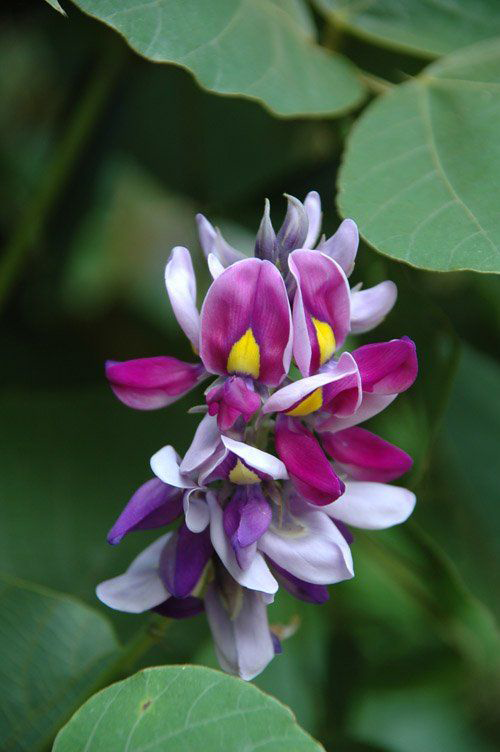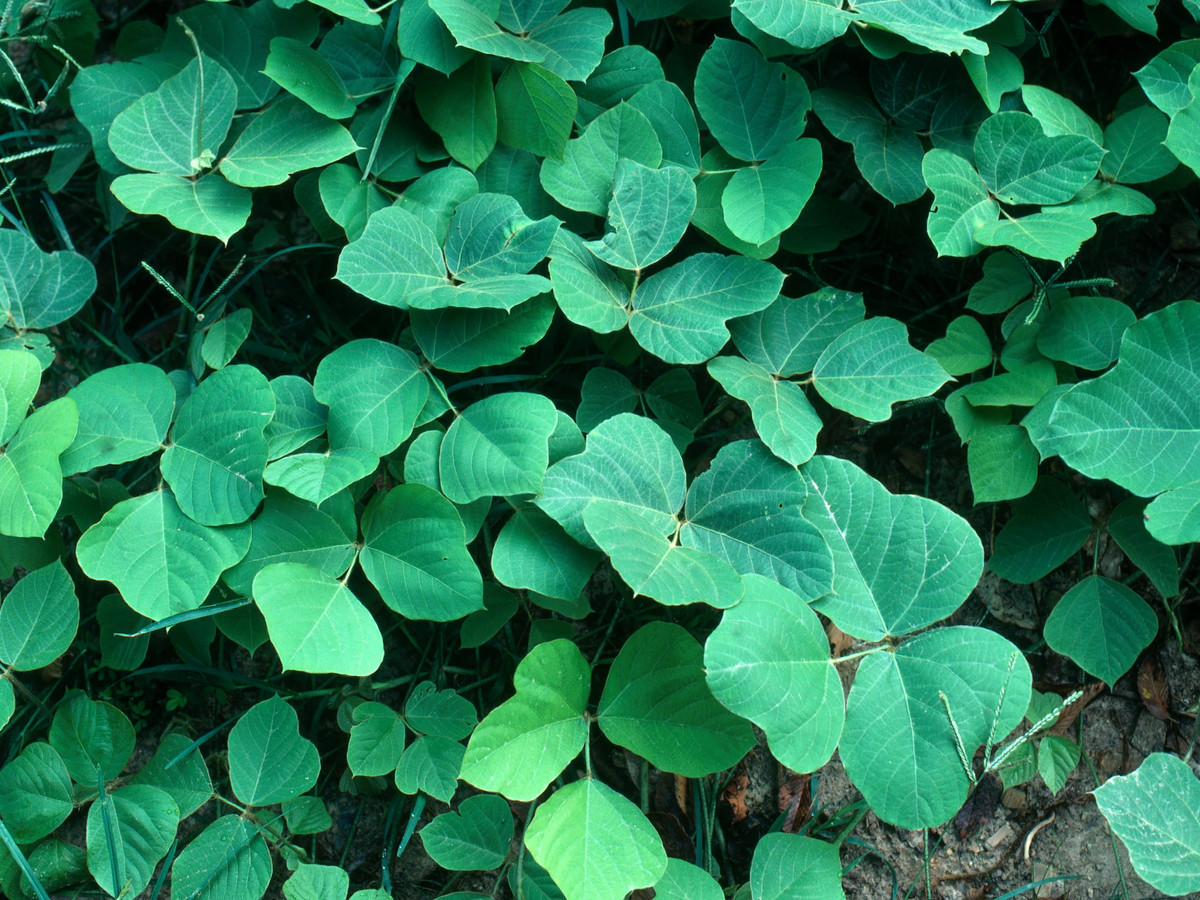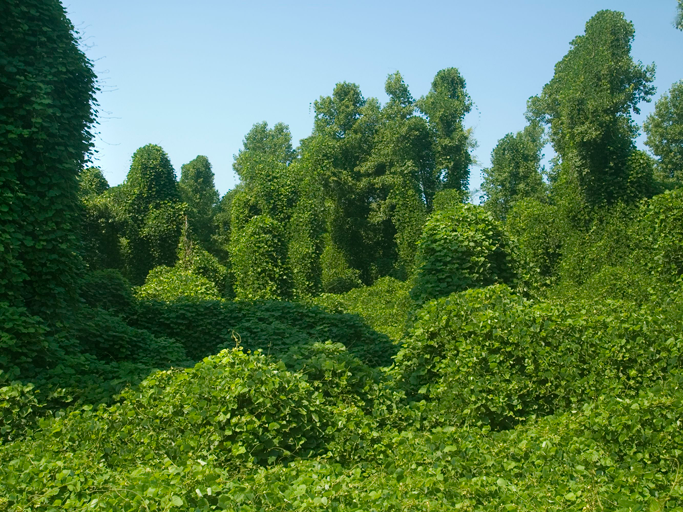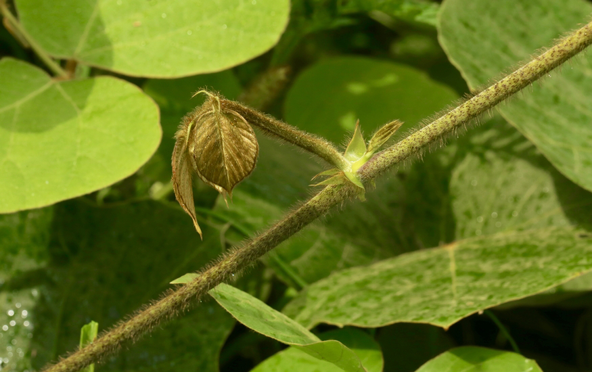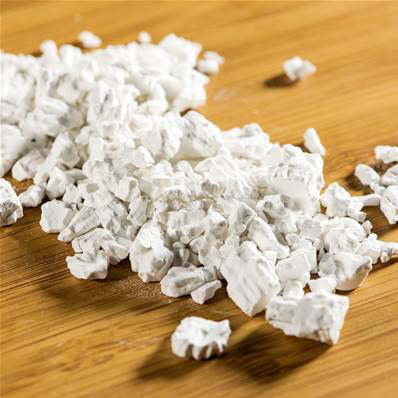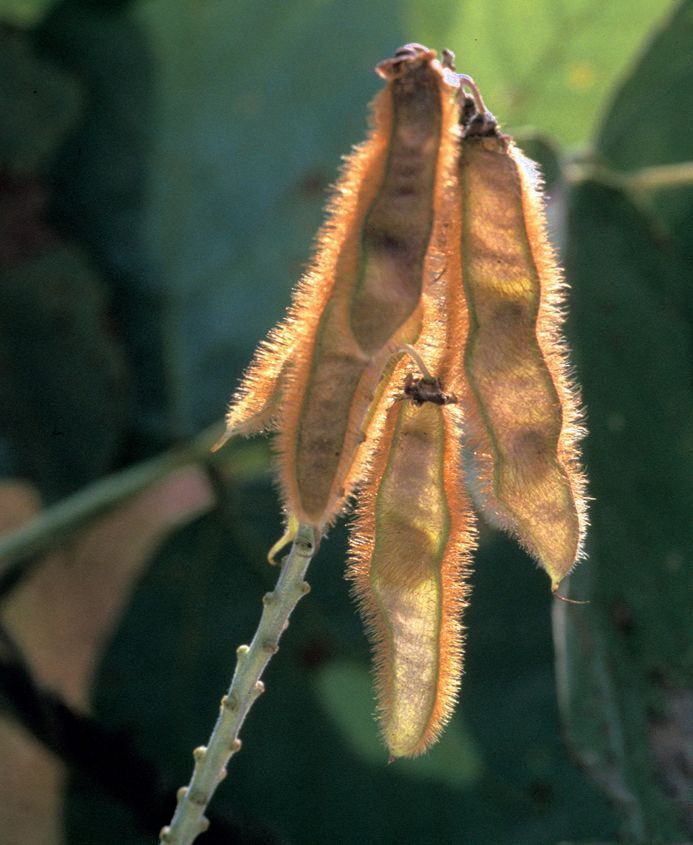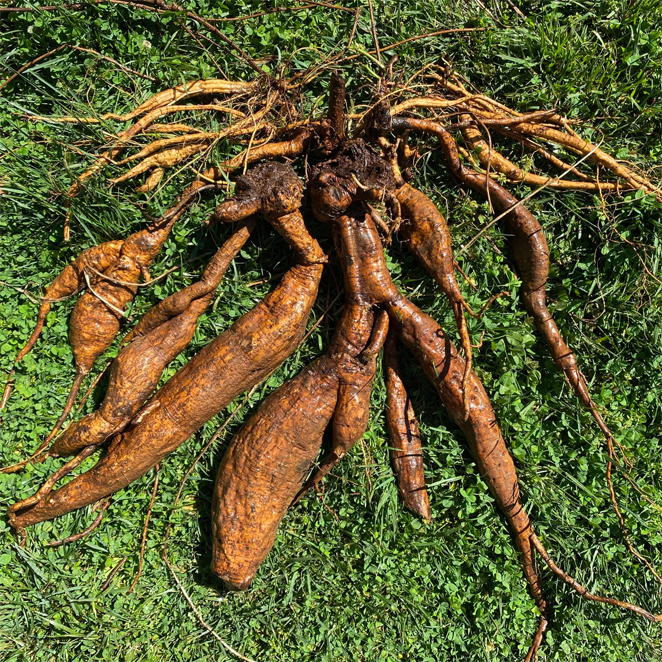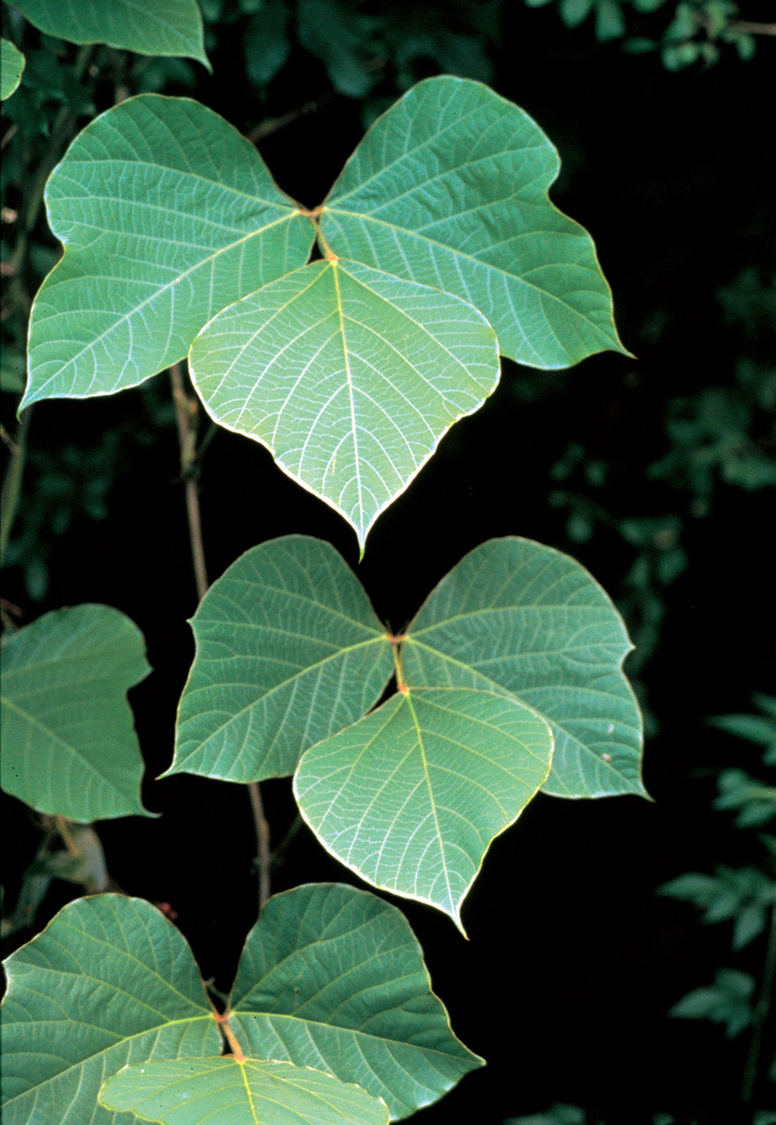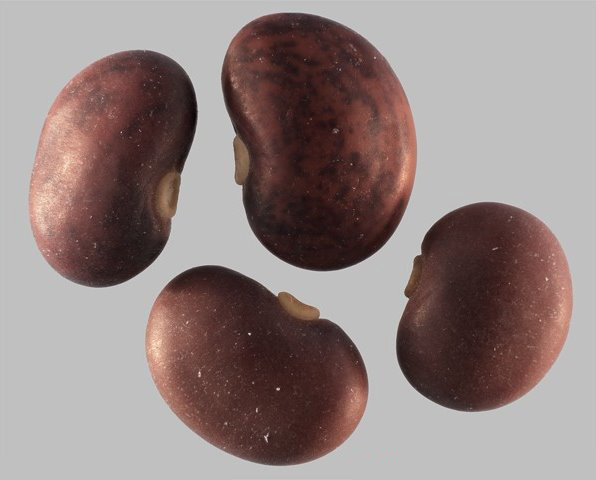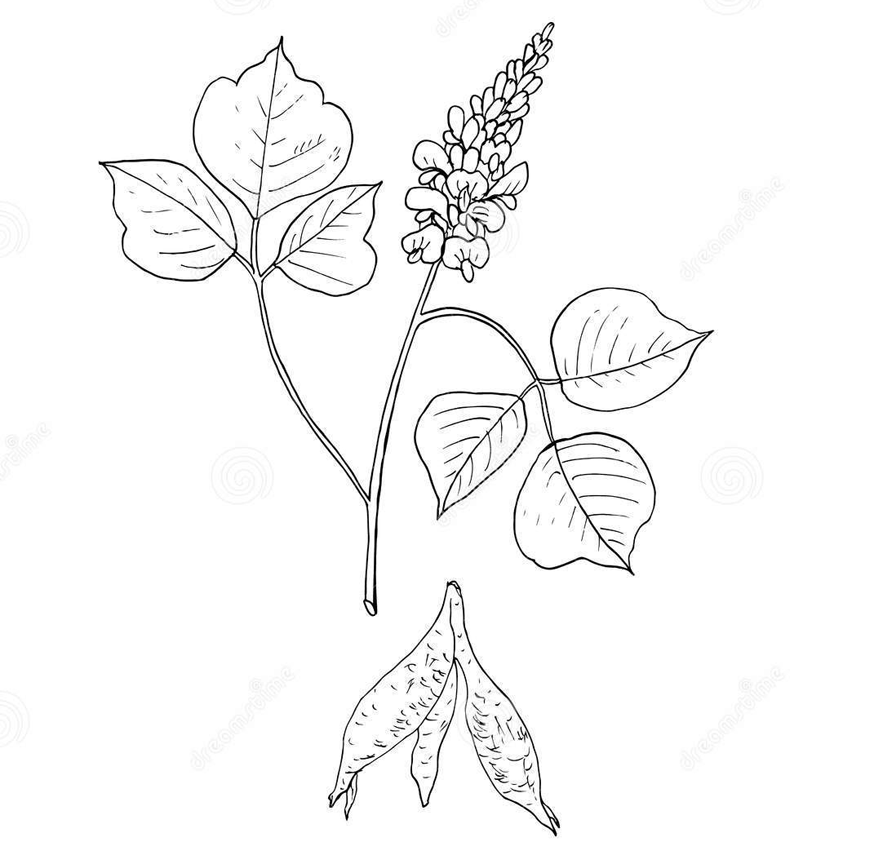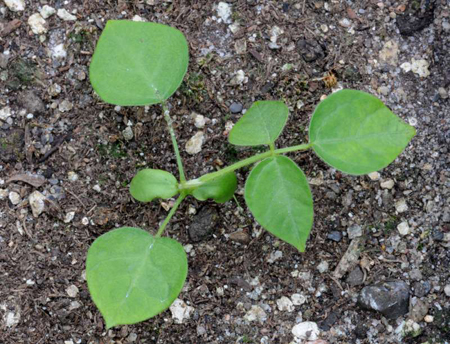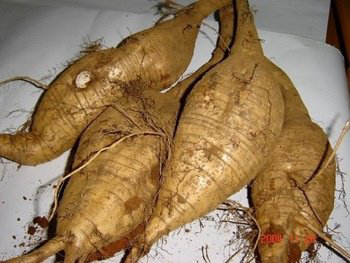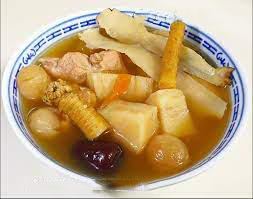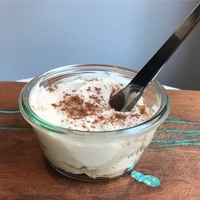| Kudzu Quick Facts | |
|---|---|
| Name: | Kudzu |
| Scientific Name: | Pueraria montana |
| Origin | East Asian countries (India, Indochina, China, Japan, Korea, Myanmar, Thailand, Laos, Vietnam, Malaysia, Indonesia, Philippines, Papua New Guinea.) |
| Colors | Initially green turning to tan with stiff golden-brown hairs as they mature |
| Shapes | Elongated and flattened pod 5-12 cm long and about 12 mm wide that are relatively flat and bulging above the seeds |
| Taste | Sweet |
| Health benefits | Reduce alcohol dependence, Help treat liver damage, Alleviate menopausal symptoms, Anti-inflammatory for Joint Pain, Promote heart health, Alleviate severe headaches, Eases upset stomach, Eases symptoms of metabolic syndrome, Chest pains, Diabetes, Kidney disease in people with diabetes, Exercise performance, Heart failure, Weight loss |
| Name | Kudzu |
|---|---|
| Scientific Name | Pueraria montana |
| Native | East Asian countries (India, Indochina, China, Japan, Korea, Myanmar, Thailand, Laos, Vietnam, Malaysia, Indonesia, Philippines, Papua New Guinea.). Probably it is also native to, or an early introduction to, some western Pacific islands (i.e. Fiji, New Caledonia, the Solomon Islands and Vanuatu). |
| Common Names | Kudzu, Japanese arrowroot, Kudzu vine, Wild kudzu, Taiwan kudzu, Kudsu, Rhodesian kudzu vine, Kudzu Bean, Kudzu Hemp, Thing-ba, arrowroot, gegen, kudsubohne, kudzu vine root, kudzubohne, kudzuranker, kudzuvine root, kuzu, lobed kudzuvine, mealy kudzu, mudgaparni, pueraria, pueraria flower, pueraria radix, pueraria root |
| Name in Other Languages | Adi: Ridin Afrikaans: Kudzu, kudzuranker Albanian: Kudzu Amharic: Kuduzu (ኩዱዙ) Arabic: Kudzu (كودزو) Armenian: Kudzu (կուձու) Azerbaijani: Kudzu Bengali: kudzu (ko͝odzo͞o) Bulgarian: Kudzu (ko͝odzo͞o) Burmese: Kudzu (ko͝odzo͞o) Chinese: Gé (葛), Shan ge teng, Shan ge (山葛), ge ma mu, Gan shu teng, Ge teng, Ye ge, Ge gen, Fen ge teng, Ko t’eng, Ko ten, yuè nán gé téng (越南葛藤) Croatian: Kudzu Czech: Kudzu Danish: Kudzu Dutch: Kudzu English: Kudzu, Japanese arrowroot, Kudzu vine, Wild kudzu, Taiwan kudzu, Kudsu, Rhodesian kudzu vine, Kudzu Bean, Kudzu Hemp Esperanto: Kudzu Estonian: Kudzu, Hõlmine pueraaria Fijian: Nggariaka, wa yaka, yaka, aka Filipino: Kudzu Finnish: Kudzu, Purppurakudzu French: Kudzu, Dolique kudzu tonkinoise, Kudzu de Formose, Nepalem, Vigne japonoise, Koudsou, Koudzou, kudzu du Japon Georgian: Kudzu (კუდზუ) German: Kudzu, Kudzubohne Greek: koutzoú (κουτζού) Gujarati: Kuḍajhu (કુડઝુ) Hausa: Kudzu Hebrew: קודזו Hindi: Kudzu (ko͝odzo͞o), sisali, mugani, mugawana, mungani Hungarian: Kudzu, Kudzu nyílgyökér Icelandic: Kudzu Indonesian: Kudzu, Bitok, Ngu lok, Tebi, Tobi Irish: Kudzu Italian: Kudzu, pueraria Japanese: Gé (葛), Taiwankuzu (タイワンクズ), kuzu, Daisumame, Fusi maki kadsura, In ken maki, Katsi maki, Kudzu, Saitzu mame Javanese: Kudzu Kannada: Kuḍju (ಕುಡ್ಜು), kohasaru Kazakh: Qudzw (құдзу) Khasi: Suting, Suting-rit Korean: Kujeu (쿠즈), chilg (칡), Chilk, Cheulk, Chuk, Chik Kurdish: Kudzu Lao: Kudzu (ko͝odzo͞o), Chüa tau kung, Khauz pièd Latin: Kudzu Latvian: Kudzu Lithuanian: Kudzu Macedonian: Kudzu (кудзу) Malagasy: Kudzu Malay: Kudzu Malayalam: Kuḍsu (കുഡ്സു) Maltese: Kudzu Marathi: Kuḍajhū (कुडझू), arkamath, arkmut, jangli mung Mizo: Hruihmul Mongolian: Kudzu (кудзу) Nepali: Kudzu (ko͝odzo͞o) Niuean: Aka, aka fala, fou gau Norwegian: Kudzu Oriya: Kudzu Papau New Guinea: Goruma, Gosima, Kagomba, Mapumb, Mudja, Nggaoka, Ngko-ko, Owitu, Sifu, hgedafo, kenangia, kohena, ko’pitu, korono, muntamagana, nggondumu, ngko’ahi, oka mapumb, oka moi, op, so’onea, wowitu Pashto: کوډزو Persian: کودزو, پیورریا مونتانا Philippines: Baai, tahaunon Polish: Kudzu, Opornik łatkowaty Portuguese: Kudzu, cincamas, cudzu, inhame-cot-da-China Punjabi: Kuḍazū (ਕੁਡਜ਼ੂ) Romanian: Kudzu Russian: Kudzu (кудзу) Solomon Islands: Lebu Samoan: A‘a Sanskrit: kakamudga (काकमुद्ग), marjaragandhika (मार्जारगन्धिका), mudgaparni (मुद्गपर्णि) Serbian: Kudzu (кудзу) Sindhi: ڪدو Sinhala: Kuḍsu (කුඩ්සු) Slovenian: Kudzu Spanish: Kudzu, Kudzu comun, Kudzu ordinario Sundanese: Kudzu Swedish: Kudzu, Kudzuböna Tajik: Kudzu (кудзу) Tamil: Kuṭsu (குட்ஸு), cirupayaru, narip payaru, naripayar Telugu: Kuḍju (కుడ్జు), pillippersara Thai: Kudzu (ko͝odzo͞o), Tum yaa krua Tongan: aka, akataha, fue‘ae puaka, Fue Alpuaka Turkish: Kudzu Ukrainian: Kudzu (кудзу), Puerariya lopastnaya (Пуэрария лопастная) Urdu: کڈزو Uzbek: Kudzu Vietnamese: Sắn dây, Day cae lan, Day dan, Cu nang, Cu san day Wallisian: Aka Welsh: Kudzu Yapese: Dedai, deday Zulu: Kudzu |
| Plant Growth Habit | Large, fast growing, leguminous, aggressive, trifoliate-leaved, semi-woody, climbing, coiling, and trailing deciduous perennial vines |
| Growing Climates | Riparian habitats, forest edges, woodland, thickets, thin woods, moist forests, watercourses, roadsides, waste areas, disturbed sites, right-of-ways, old fields, rail embankments, abandoned pastures, banks of inland water bodies, fencerows, open pastures, hedges, river sides, swamps |
| Soil | Succeeds in most well-drained soils in a sunny position, though it does not make good growth on very light poor sand or on poorly drained heavy clay. Grows best on well-drained loam soil of good fertility. Plants cannot stand waterlogging on any soil |
| Plant Size | Grows up to 20 metres per year and can achieve a height of 30 metres. |
| Root | Roots are tuberous, up to two meters long and 18 to 45 centimeters wide that can weigh as much as 180 kilograms on old plants. |
| Stem | Succulent and yellow green with dense, erect golden hairs and upward-matted silver hairs, aging to ropelike and light gray barked. Young stems are hairy, becoming smooth, brown. Older stems are up to 7.5 cm (3 in) in diameter frequent unswollen nodes root |
| Leaf | The very large alternately arranged leaves are compound with three leaflets (i.e. they are trifoliate) and borne on stalks (i.e. petioles) 8-13 cm long with long hairs, swollen bases, and deciduous stipules. Tips are pointed. Margins are thin membranous and fine golden hairy. |
| Flowering season | August-September. |
| Flower | Pea-shaped flowers are produced during summer and are borne in elongated clusters (15-40 cm long) in the upper leaf forks (i.e. in axillary racemes). These clusters contain up to 90 purple, blue, pink or violet-coloured flowers (12-20 mm long). The flowers have five sepals 6-12 mm long that are fused together at the base, and five petals. |
| Fruit Shape & Size | Elongated and flattened pod 5-12 cm long and about 12 mm wide that are relatively flat and bulging above the seeds |
| Fruit Color | Initially green turning to tan with stiff golden-brown hairs as they mature |
| Taste | Sweet |
| Plant Parts Used | Tuberous roots, flower, leaves, shoot, seeds |
| Propagation | Primarily by runners, stolons (slender horizontal stems) and rhizomes. Limited spread by seed |
| Lifespan | More than 2 years |
| Available Forms |
|
| Health Benefits |
|
| Precautions |
|
Plant Description
Kudzu is a large, fast growing, leguminous, aggressive, trifoliate-leaved, semi-woody, climbing, coiling, and trailing deciduous perennial vines with extensive root system. In optimum conditions, it is found growing up to a foot per day and to 100 feet in a single growing season. The plant is found growing in Riparian habitats, forest edges, woodland, thickets, thin woods, moist forests, watercourses, roadsides, waste areas, disturbed sites, right-of-ways, old fields, rail embankments, abandoned pastures, banks of inland water bodies, fencerows, open pastures, hedges, river sides and swamps. The plant succeeds in most well-drained soils in a sunny position, though it does not make good growth on very light poor sand or on poorly drained heavy clay. It grows best on well-drained loam soil of good fertility. Plants cannot stand waterlogging on any soil.
Roots
Kudzu roots typically reach a soil depth of 1-3 m (3-9 ft.) with high starch and water contents and are capable of storing large amounts of carbohydrates. Roots are tuberous, up to two meters long and 18 to 45 centimeters wide that can weigh as much as 180 kilograms on old plants. The vines spread by rhizomes and by stems that root at the nodes. When left unchecked, particularly in warm winter climates, vines can cover shrubs and tree canopies, choking out and killing entire plant communities. Vines have also been known to collapse buildings and bring down utility poles. The voracious nature of this vine has given rise to a number of tongue-in-cheek common names such as “the vine that ate the South”.
Stem
Stems are succulent and yellow green with dense, erect golden hairs and upward-matted silver hairs, aging to ropelike and light gray barked. Young stems are hairy, becoming smooth, brown. Older stems are up to 7.5 cm (3 in) in diameter frequent unswollen nodes root when on the ground to form new plants when interconnecting vines die, eventually growing large with age to form root crowns 1 to 10 inches (2.5 to 25 cm) wide. Mature bark eventually rough, rigid, and usually dark brown.
Leaves
The very large alternately arranged leaves are compound with three leaflets (i.e. they are trifoliate) and borne on stalks (i.e. petioles) 8-13 cm long with long hairs, swollen bases, and deciduous stipules. Tips are pointed. Margins are thin membranous and fine golden hairy. At the base of each leaf stalk there is a pair of small leafy structures (i.e. stipules) 8-16 mm long. Each of the large leaflets is 7-20 cm long and 5-13 cm wide and may be un-lobed or slightly lobed and usually has pointed tips (i.e. acuminate apices). The uppermost (i.e. terminal) leaflet is usually slightly larger and three-lobed, while the two side (i.e. lateral) leaflets usually have two lobes. Some or all of these leaves may be shed during cooler and/or drier conditions (i.e. it is deciduous). Both sides of the leaflets are sparsely hairy (i.e. pubescent). The upper surfaces are light green while the undersides are grayish-green. Leaves have the ability to reorient rapidly in relation to the sun to optimize photosynthesis and decrease temperature and water loss
Flowers
The pea-shaped flowers are produced during summer and are borne in elongated clusters (15-40 cm long) in the upper leaf forks (i.e. in axillary racemes). These clusters contain up to 90 purple, blue, pink or violet-coloured flowers (12-20 mm long). The flowers have five sepals 6-12 mm long that are fused together at the base, and five petals. The uppermost petal (i.e. standard) is larger than the two side petals (i.e. wings) and has a yellow spot near its base. The two lower petals are fused together and folded (i.e. into a keel). The flowers also have ten stamens, nine of which are fused together with the other being separate from the rest, and an ovary topped with a style and stigma. Flowering normally takes place in between August-September. Flowers are produced on plants exposed to direct sunlight and pollination is by insects. Flowers and fruits are produced only on vertically twining and hanging vines.
Fruits
Fertile flowers are followed by elongated and flattened pod 5-12 cm long and about 12 mm wide that are relatively flat and bulging above the seeds. Fruits are initially green turning to tan with stiff golden-brown hairs as they mature. Fruits are hairy and mature in early fall becoming dry and tan to split on one or both sides to release three to 10 seeds or detach intact. The pods produce only a few viable seeds in each pod cluster. The compressed kidney-shaped seeds are nearly round and about three to four millimeters long. Seeds are dispersed by wind, animals, and water.
History
Kudzu is native to Asia where it has long been cultivated for its starchy tubers (food crop and medicinal uses) and for its hemp like fibers. It was first introduced into the U.S. as an ornamental landscape planting at the Japanese Pavilion at the Philadelphia Centennial Exposition of 1876. During the first half of the 20th century, before its aggressive nature was fully understood, it was widely planted in the southeastern U.S. as a forage crop and for erosion control. In Missouri, it was planted along highways for bank stabilization. Over the past 100 years, it has escaped cultivation and naturalized in many areas of the eastern U.S. from Connecticut to Oklahoma south to Florida and Texas, becoming perhaps the most infamous invasive weed in the country. Although early on the Federal Government promoted its use, in 1997, it was classified as a noxious weed under the Federal Noxious Weed Act of 1974. It is currently the target of numerous extinction programs.
Health benefits of Kudzu root
Kudzu root consists of more than 70 plant compounds, some of which may be responsible for the root’s potential health benefits. Listed below are some of the well-known health benefits of using Kudzu root
1. Reduce alcohol dependence
Several researches suggest kudzu root may help treat alcohol use disorder or alcohol dependence. The participants of one research reported their desire for and consumption of alcohol for the duration of the study. Researchers found that the kudzu extract had no effect on alcohol cravings, but it reduced the number of weekly alcoholic drinks by 34–57%.
Additionally, the men who took kudzu had fewer heavy drinking days per week and had considerably more consecutive days with no alcohol consumption. Research found that people who took puerarin, an isoflavone extract from the kudzu plant, prior to drinking took longer to consume alcoholic beverages.
It’s important to note that these studies used kudzu extract, which may have contained other parts of the kudzu plant besides the root. Therefore, scientists need to do more research in this area on the effects of kudzu root specifically. (1), (2), (3), (4)
2. Help treat liver damage
Kudzu root is rich in antioxidants, compounds that protect cells from oxidative stress that can lead to disease. The isoflavone puerarin is the most abundant antioxidant compound in the kudzu vine.
Research found that kudzu vine extract was extremely beneficial in treating alcohol-induced liver damage by scavenging harmful free radicals and boosting the natural antioxidant system. (5)
3. Alleviate menopausal symptoms
Menopausal and peri-menopausal symptoms, such as night sweats and hot flashes, may be relieved by the use of Kudzu root extract. Research indicates that taking the extract by mouth can reduce hot flashes throughout the day. And relieve vaginal dryness associated with menopause. There is also some indication that Kudzu root extract may improve the cognitive abilities of menopausal women. Thus preventing the dreaded change brain. This is thought to be due to the increased blood flow as a result of Kudzu extract consumption. The extra blood helps to keep the vaginal walls lubricated. And it increases the body’s ability to cool itself during hot flashes.(6), (7), (8), (9), (10)
4. Anti-inflammatory for Joint Pain
For those who suffer from joint pain, the anti-inflammatory properties of the chemical Daidzein found in Kudzu root may provide welcome relief. It does so by increasing blood flow to the joints including knees and ankles. Kudzu helps your body naturally heal from stress caused by overuse or improper movement in your joints. In addition to helping your body move more naturally, Kudzu has anti-inflammatory properties. They can help reduce swelling of the joints and increase mobility. Users may experience a greater range of motion once the swelling begins to recede, and greater mobility as walking, standing, and even jogging become easier. (11)
5. Promote heart health
Kudzu root offered heart-protective benefits to mice with burn-induced heart injuries. People have also used it in traditional Chinese medicine for heart disease, but scientists need to do more research on this. (12), (13)
6. Alleviate severe headaches
Research conducted in Yale University concluded that Kudzu extract has been shown to reduce the frequency of cluster headaches. In addition to limiting the frequency of cluster headaches, Kudzu extract has been demonstrated to reduce the pain associated with the headaches – a pain that some say beats any other human pain. Although the extract may not alleviate all of the pain from cluster headaches, even mitigating that pain has been a blessing for sufferers. Chemicals in Kudzu increase cerebral blood flow, thus increasing the blood going to the brain. It is shown to prevent swelling and stiffness in the neck, which can worsen cluster headaches. (14)
7. Eases upset stomach
Kudzu can help ease digestion and improve bowel movements, both of which are the causes of tummy ache. With its anti-inflammatory properties, it can help with bowel irritation and promote healthy gut bacteria. Regular consumption of the kudzu root as food, versus the extract, has been shown to alleviate discomfort from irritable bowel syndrome and acute diverticulitis. The thick, viscous consistency of Kudzu coats the interior walls of the stomach and small intestine, protecting it from harsh stomach acids that cause irritation and heartburn. Stomach ulcers can also receive the protection Kudzu root provides, and the fiber in the root helps digestion flow properly, thus excluding some of the severity of leaky gut syndrome.
8. Eases symptoms of metabolic syndrome
The chemical puerarin, one of the phytochemicals found in Kudzu, has been demonstrated to aid in the treatment of metabolic syndrome. This includes increasing insulin sensitivity and lowering blood sugar. It aids the metabolic processes in the body, including processing glucose. It does this by directing glucose away from fat cells and the blood and toward muscle cells. Thus not only decreasing the body’s blood sugar but making it more effective in movement, as well. People with diabetes will find relief from better-managed metabolism and blood sugar regulation. Interestingly athletes, particularly endurance athletes, may enjoy the benefits of having better glucose processing in their muscles.
9. Chest pains
Earlier research suggests that puerarin, a chemical in kudzu, might improve signs and symptoms of chest pain when taken by mouth or injected intravenously (by IV). Some evidence recommends that using IV puerarin along with usual treatment might be more effective than usual treatment alone. However, researches on puerarin are of poor quality and might not be dependable. Puerarin injection products are not available in North America.
10. Diabetes
Earlier research suggests that taking puerarin, a chemical in kudzu, 750 mg daily by mouth along with the diabetes medication rosiglitazone (Avandia) decreases blood sugar in patients with type 2 diabetes. However, injecting puerarin intravenously (by IV) does not appear to reduce blood sugar.
11. Kidney disease in people with diabetes (diabetic nephropathy)
Early research suggests that taking puerarin, a chemical in kudzu, and 750 mg daily by mouth along with the diabetes medication rosiglitazone (Avandia) improves kidney function in people with diabetic nephropathy.
12. Exercise performance
Early research suggests that taking a combination supplement containing kudzu isoflavones along with other ingredients might improve exercise performance in some people.
13. Heart failure
Some research recommend taking puerarin, a chemical in kudzu, 400 mg/day by mouth for 10 days. It might improve heart function in people with heart failure.
14. Weight loss
Early research suggests that taking kudzu extract 300 mg by mouth daily for 12 weeks reduces body fat and body mass index (BMI) in people who are obese. However, taking kudzu extract 200 mg daily does not appear to have the same effects.
Traditional uses and benefits of Kudzu
- Kudzu vine is commonly used in Chinese herbalism, where it is considered to be one of the 50 fundamental herbs.
- Kudzu vine is commonly used in Chinese herbal medicine to treat alcoholism, fever, colds, diarrhea, dysentery, angina pectoris, migraine, measles, boils, swellings, mouth sores, etc.
- Recent research has shown that compounds called ‘daidzin’ and ‘daidzein’, contained in the roots and the flowers, are a safe and effective method for treating alcohol abuse.
- Flowers and the roots are antidote, antiemetic, antipyretic, antispasmodic, demulcent, diaphoretic, digestive, febrifuge, hypo-glycemic and hypotensive.
- It is useful in the treatment of angina pectoris and migraine.
- Root is frequently used as a remedy for measles, often in combination with Cimicifuga foetida.
- The root contains puerarin which increases the blood flow to the coronary artery and protects against acute myocardial ischaemia caused by the injection of pituitrin.
- Stems are galactagogue and are also applied as a poultice to incipient boils, swellings, sore mouths etc.
- Seed is used in the treatment of hangover and dysentery.
- Root is prescribed for influenza and also snake bites.
- It is used externally applied to dog bites.
- Shoots are used to stimulate secretion of milk; applied to incipient boils and aphthous stomatitis in children.
- In Chinese traditional medicine, it is used to treat tinnitus, vertigo, deafness, diabetes; used as a remedy for alcoholism and hangover.
- Flowers are used to detoxify the liver.
- Paste of bark applied to cuts and wounds to stop bleeding and for quick heeling.
- Tea from the tubers is used in China and Indo-China against colds, fever, influenza, diarrhea, dysentery and hang-overs.
- Starch from the tuber is used medicinally in Japan in soup or tea to restore intestinal and digestive disorders.
- Extract is effective in lessening alcohol intoxication.
Ayurvedic Health benefits of Kudzu
- Diarrhea: Take a cup of hot water and mix One teaspoon of Kudzu powder. This drink is very useful for upset stomach.
- Hangover: Boil One tablespoon powdered root in a cup of water. Drink twice a day.
- Alcoholism: Add1 tsp of powdered Kudzu to a cup of water. Boil. Add honey. Drink thrice a day. OR Have extract twice a day.
- Oligospermia: Take Half cup Powdered Black gram, Half cup Powdered Velvet Bean, 3 to 4 pinches Powdered Shatavari, 3 to 4 pinches Powdered Ashwagandha, 3 to 4 pinches Powdered Licorice, 2 tablespoons Ghee, 2 tablespoons Kudzu Fruit Juice, 2 tablespoons Sugarcane Juice (Optional), 1 tablespoon Powdered Sugar Candy, 1 tablespoon Honey, 1 pinch Long Pepper and Half glass Cow’s Milk. Take a wok. Put all dry ingredients except Long Pepper and 3 glasses water in it. Boil till it remains 1/4. Add Clarified Butter, Kudzu Juice, Sugarcane Juice and Milk. Heat again till Clarified Butter floats to the top. Stir time to time. Remove from heat. Add Sugar Candy, Honey and Long Pepper. Mix all. Have one teaspoon once a day. Usually preferable at night.
- Asthenospermia: Take 100 gram Black gram, 100 gram Velvet Bean, 10 gram Asparagus Racemosus, 10 gram Withania Somnifera and 10 gram Licorice. Powder them together. Boil in 10 glasses of water till it remains 1/4 part. Add half cup Ghee, half cup Kudzu, half cup Sugarcane juice and 2 glass milk (Cow). Heat on low flame till Ghee floats. Remove from heat. Now add 4 tablespoons Sugar Candy, 4 tablespoons Honey and 4 pinches Long Pepper powder. Stir. Have one teaspoon once a day.
Culinary Uses
- Roots, a staple food in Japan, are cooked or made into noodles.
- Flowers, young shoots, roots and young leaves can be cooked.
- Root can be consumed after being cooked.
- Root consists of about 10% of a fine quality starch – this can be extracted and used as a crispy coating in deep fried foods, or as a thickening agent in soups etc.
- It can also be made into noodles, or like agar or gelatin is used as a gelling agent for salads.
- Roots are a staple food in Japan; the peeled root consists of about 2.1% protein, 0.1% fat, 27.1% carbohydrate, 1.4% ash.
- Flowers can be consumed after cooked or made into pickles.
- Stems and young leaves are consumed raw or cooked.
- A very nutritious food, the fresh young shoots taste like a cross between a bean and a pea.
- It is a common food crop in Java, Sumatra, and Malay.
- The flowers are used to make a jelly that tastes similar to grape jelly.
- Kudzu leaves, shoots, and flowers are used in salads, soups, sautéed dishes and casseroles.
- Kudzu leaves are an edible vegetable in Asia.
- Tubers are sometimes considered as famine food in South-East Asia and are also used to prepare a culinary starch.
- It is used especially in China, Japan and Papua New Guinea for sauces, soups, jelled salads, noodles, porridges, jelly puddings, confectionary and beverages.
- Kudzu powder is used in Japan to make an herbal tea called kuzuyu.
Recipes
Kudzu Herbal Soup
Ingredients
- 380 g Kudzu
- 10 g Dang shen
- 15 g Solomon seal
- 25 g Dried longan
- 6 Red dates
- 1 Tbsp. wolfberries
- 1 Honey date
- 300 g pork
- 8 L Water
Directions
- Blanch pork in boiling hot water
- Clean, scrub and cut arrowroot into chunks
- Wash and drain other ingredients
- Bring a pot of water to boil, add all ingredients
- Boil for 15min on high heat. Then cover, reduce heat and continue boiling for 1.5-2 hours
- Off heat and serve hot
Kudzu root pudding
Ingredients
- 1/3 cup water
- 2 1/2 Tbsp. kudzu powder
- 1 3/4 cups coconut milk
- 1/4 cup maple syrup
- 1/2 tsp ground cinnamon
- 1/2 tsp ground ginger
- 1/4 vanilla bean
- Pinch of sea salt
Directions
- Place water and kudzu powder into a saucepan. Whisk until powder is dissolved.
- Add coconut milk, maple syrup, cinnamon, ginger, vanilla bean scrapings and sea salt. Place over medium heat. Whisk often.
- When mixture comes to a slow boil, remove from heat and allow simmering for 5 minutes. Pour into ramekins or desired serving cups. Refrigerate for 2 hours before serving.
Other Facts
- It is a religious plant in Arunachal Pradesh, used in traditional festival.
- Plant also functions as ground cover and tough, strong fiber from its stems is made into ropes, cables, coarse cordage and textiles, etc.
- Root can be harvested from the autumn to the spring and is used fresh or dried.
- Flowers are harvested just before they are fully open and are dried for later use.
- Plant can be used as a ground cover in a sunny position.
- It can also be used to make a quick, temporary screen.
- Plants are very fast-growing and have an extensive root system which can be 1.8 meters deep.
- The flowers have a sweet vanilla scent.
- In the United States the plant is viewed as an invasive plant.
- Kudzu is primarily grown for pasture, hay, and silage; palatable to all types of livestock.
- In China and Japan, Ko-fen flour is obtained from tuberous roots.
- In the U.S. kudzu is used to make soaps, lotions, jelly and compost.
- Fiber obtained from the stems; studied for potential use as wallpaper, clothing and paper.
- It is mostly cultivated in China and Japan for its textile fiber and root.
- Its deep taproots also transfer valuable minerals from the subsoil to the topsoil, thereby improving the topsoil.
- In the deforested section of the central Amazon Basin in Brazil, it has been used for improving the soil pore-space in clay latosols, thus freeing even more water for plants than in the soil prior to deforestation.
- Both traditional and contemporary basketry artists use kudzu.
- In Japan, young kudzu vines are harvested to provide supple waterproof fibers for weaving sturdy wicker baskets or trunks.
- Cellulose fiber from large vines and roots is used as the basic raw material for making fine traditional paper.
- Fiber is also used to stuff cushions, beds, and chairs.
- When burned, it acts as a mosquito repellent.
- Kudzu has been used to produce an unusually fragrant, flavorful honey.
- Kudzu is still valued as a soil-conserving plant for erosion control on steep slopes and embankments, less invasive species are now available for stabilization purposes.
- Kudzu vines can grow up to 0.3 m per day in early summer and as much as 18 m total during the growing season (May–October).
Special Precautions and Warnings
Pregnancy and breast-feeding
There is not enough reliable information about the safety of taking kudzu if you are pregnant or breast feeding. Stay on the safe side and avoid use.
Bleeding or blood clotting disorders
Kudzu might slow blood clotting. It might make bleeding and blood clotting disorders worse, and it might also interfere with medications used as treatment.
Cardiovascular (heart and blood vessel) conditions
There is a concern that kudzu might interfere with cardiovascular treatments. Kudzu extracts seem to lower blood pressure and affect heart rhythm in animals.
Diabetes
Kudzu might affect blood sugar levels in people with diabetes. Watch for signs of low blood sugar (hypoglycemia) and monitor your blood sugar carefully if you have diabetes and use kudzu.
Hormone-sensitive condition such as breast cancer, uterine cancer, ovarian cancer, endometriosis, or uterine fibroids
Kudzu might act like estrogen. If you have any condition that might be made worse by exposure to estrogen, don’t use kudzu.
Liver disease
There is some concern that taking kudzu might harm the liver. In theory, kudzu might make liver diseases, such as hepatitis, worse. People with liver disease or a history of liver disease should avoid kudzu.
Surgery
Kudzu might affect blood sugar levels and might interfere with blood sugar control during and after surgery. Stop taking kudzu at least 2 weeks before a scheduled surgery.
Different Control Methods
Crown removal
Destroying the full underground system, which can be extremely large and deep, is not necessary for successful long-term control of kudzu. Killing or removing the kudzu root crown and all rooting runners is sufficient. The root crown is a fibrous knob of tissue that sits on top of the roots. Crowns form from multiple vine nodes that root to the ground, and range from pea- to basketball-sized. The age of the crowns is correlated to how deep they are in the ground. Nodes and crowns are the source of all kudzu vines, and roots cannot produce vines. If any portion of a root crown remains after attempted removal, the kudzu plant may still grow back.
Mechanical methods of control involve cutting off crowns from roots, usually just below ground level. This immediately kills the plant. Cutting off the above-ground vines is not sufficient for an immediate kill. Destroying all removed crown material is necessary. Buried crowns can regenerate into healthy kudzu. Transporting crowns in soil removed from a kudzu infestation is one common way that kudzu unexpectedly spreads and shows up in new locations.
Mowing
Close mowing every week, regular heavy grazing for many successive years, or repeated cultivation may be effective, as this serves to deplete root reserves. If done in the spring, cutting off vines must be repeated. Regrowth appears to exhaust the plant’s stored carbohydrate reserves. Harvested kudzu can be fed to livestock, burned, or composted.
Burning
Prescribed burning is used on old extensive infestations to remove vegetative cover and promote seed germination for removal or treatment. While fire is not an effective way to kill kudzu, equipment, such as a skid loader, can later remove crowns and kill kudzu with minimal disturbance or erosion of soil.
Herbicide
Systemic herbicides like glyphosate, triclopyr, or picloram, can be applied directly on cut stems, which is an effective means of transporting the herbicide into the kudzu’s extensive root system. Herbicides can be used after other methods of control, such as mowing, grazing, or burning, which can allow for an easier application of the chemical to the weakened plants. In large-scale forestry infestations, soil-active herbicides have been shown to be highly effective.
After initial herbicidal treatment, follow-up treatments and monitoring are usually necessary, depending on how long the kudzu has been growing in an area. Up to 10 years of supervision may be needed after the initial chemical placement to make sure the plant does not return.
Fungi
Since 1998, the United States’ Agricultural Research Service has experimented with using the fungus Myrothecium verrucaria as a biologically based herbicide against kudzu. A diacetylverrucarol spray based on M. verrucaria works under a variety of conditions (including the absence of dew), causes minimal injury to many of the other woody plants in kudzu-infested habitats, and takes affect quickly enough that kudzu treated with it in the morning starts showing evidence of damage by midafternoon. Initial formulations of the herbicide produced toxic levels of other trichothecenes as byproducts, though the ARS discovered that growing M. verrucaria in a fermenter on a liquid diet (instead of a solid) limited or eliminated the problem.
References:
https://www.itis.gov/servlet/SingleRpt/SingleRpt?search_topic=TSN&search_value=504683#null
http://www.hear.org/pier/species/pueraria_montana_var_lobata.htm
https://npgsweb.ars-grin.gov/gringlobal/taxon/taxonomydetail?id=314966
https://pfaf.org/user/Plant.aspx?LatinName=Pueraria+montana
https://www.cabi.org/isc/datasheet/83912809
https://gd.eppo.int/taxon/PUEMO
http://www.theplantlist.org/tpl1.1/record/ild-31247
https://en.wikipedia.org/wiki/Kudzu
https://www.missouribotanicalgarden.org/PlantFinder/PlantFinderDetails.aspx?taxonid=263642
https://en.wikipedia.org/wiki/Pueraria_montana
https://www.flowersofindia.net/catalog/slides/Kudzu%20Vine.html
https://www.invasive.org/browse/subinfo.cfm?sub=2425
http://www.iucngisd.org/gisd/species.php?sc=81
https://www.feedipedia.org/node/258
http://uses.plantnet-project.org/en/Pueraria_montana_(PROSEA)
https://tropical.theferns.info/viewtropical.php?id=Pueraria+montana
https://plants.usda.gov/home/plantProfile?symbol=PUMO


